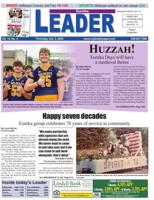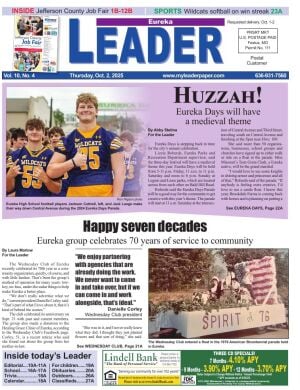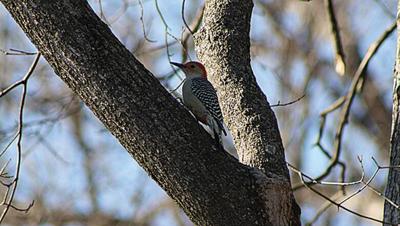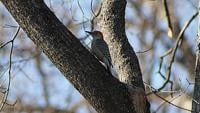Looking for a silver lining in the frigid temperatures leading up to Christmas, I found it below my bird feeders in the long-lasting blanket of snow and the below-zero wind chill factor.
My backyard was teeming with activity, from the big, loud blue jays screeching at their perch atop the feeder hook, to the small dark-eyed juncoes hopping silently as they searched for scrap seeds on the snow-covered ground.
While feeding the birds can be a fun activity year-round, it’s a lifeline for them when their other sources of food are more difficult to find on frozen earth, under a layer of snow. The seeds help them generate body heat.
The holiday party at my house brought many guests. The ground-feeding birds bustled around the shepherd’s pole base, scratching for whatever had descended from above. Suet cakes for the woodpeckers provided the best chances of falling food as they worked for seeds in the soft material and fragments dropped to the ground.
Meanwhile the chickadees, tufted titmice and nuthatches zoomed back and forth from the nearby branches to the feeder, grabbing one seed at a time before returning to the tree to crack open their meals. Northern cardinals and finches are more likely to set up shop on the feeder perch and just sit there, occasionally grabbing a seed but also seemingly guarding the bounty from everyone else.
Almost exclusively, I fill my feeders with black-oil sunflower seeds. They attract the aforementioned regulars as well as occasional strangers like the rose-breasted grosbeak. I like to have a handful or two of millet and milo to scatter on the ground for the juncoes, sparrows and mourning doves who prefer the low-hanging fruit, so to speak.
Identifying the different birds is easy. Assisted by technology, or an old-fashioned bird book, determining who’s who comes down to factors including size, shape, color, and location. Time of year is also a consideration, because there are fewer birds here during the winter. The Merlin Bird app asks those questions to narrow the possibilities.
Once you have the basic identification down, other characteristics to look for are beak shape, foot color, tail positions, and speckles or solid coloration. You can also look for wing bars and eye lines, the stripes that some birds have and others don’t. A bird’s bill can be cone-shaped like a cardinal’s or pointy like a wren’s.
The first to return to a refilled feeder are the black-capped or Carolina chickadees, usually recognized as separate species based on the differences in their songs. Distinguishing the two in our area is difficult because their ranges overlap and they occasionally hybridize. An interesting fact from the Audubon Society’s allaboutbirds.org website is that the hybrid offspring can sing either tune or a combination.
I like being able to call out the name of each bird species as they arrive. The downy, hairy, red-bellied and northern flicker woodpeckers are unique enough for instant identification. The red-headed and pileated woodpeckers are also around this time of year, but not as likely to visit the feeder.
Somewhat challenged at identifying all colors, I struggle with separating the purple, gold and house finches, so I usually just lump them all together until later in the spring when the male plumage brightens with the season.
While the number and variety of birds seems vast, their population pales in comparison to historic levels and unfortunately has been declining dramatically in recent years. Documented surveys over the past 50 years show nearly three billion fewer birds in North America than in the 1970s. Some species are down more than 70 percent.
Coincidentally and frighteningly, that three-billion number matches the low end of the historic estimates for the population of passenger pigeons in America when European settlers arrived. By 1900, the billions of passenger pigeons were all gone, other than a few captive birds. They were officially declared extinct a decade later.
Most of the passenger pigeons were hunted to extermination. Not many people are shooting song birds these days, but other factors in population decline include deforestation, widespread pesticide use, monocultures like huge crop fields, urban lawns and specific tree landscapes, and invasive species.
Providing seeds in winter helps, but more important steps to protecting wild birds can be easy, too. Grow native plants in your landscaping, reduce the use of pesticides (the birds need the bugs), prevent window strikes and keep your cats indoors.
John Winkelman has been writing about outdoors news and issues in Jefferson County for more than 30 years and is the Associate Editor for Outdoor Guide Magazine. If you have story ideas for the Leader outdoor news page, e-mail ogmjohnw@aol.com, and you can find more outdoor news and updates at johnjwink.com.




